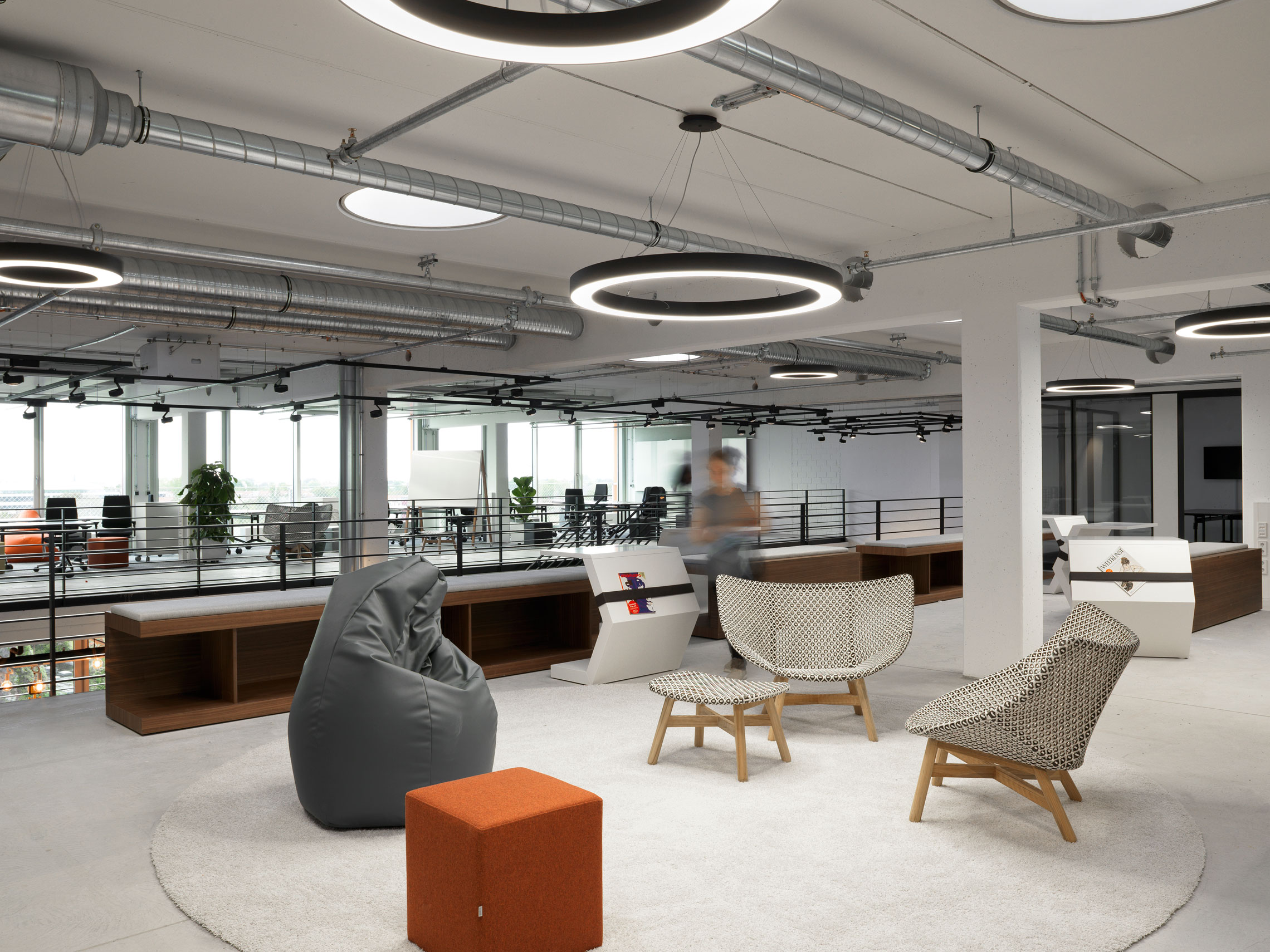“The fact is that open office space designs have to meet the rising demands of communication and social interaction within a business. It’s only through good planning and execution that the potential offered by open plan office space can be realized. That means supporting a sense of inner freedom in the people that work there, in turn increasing the value created by a company,” says Timo Brehme, founder and CEO of CSMM Gmbh. Based in Germany and Austria, Brehme’s consultancy has been advising both German and international firms since 2003 in the selection and redesign of business property. Here, Timo Brehme lists the most common mistakes made by companies making the move to open plan offices—and how they can be avoided.
Mistake 1: Focusing on saving space
The main motivating factor for businesses to use open plan offices is to save costly floor space. Timo Brehme comments: “Workspaces are pushed close together under the pretext of making communication more open. Many managers forget how important it is to offer spaces for staff to collaborate, or ones that add value. These are essential for optimizing work processes and speeding up communication. If you don’t invest in ‘islands’ where workers can get some peace and quiet, or in well thought-out meeting spaces, you’re actually hindering teamwork instead of supporting it. If you’re managing a business, you should remember that the costs for the space are often a lot lower than personnel costs. The value added by investing in employees’ sense of wellbeing is far more sustainable than the savings attained by saving on floor space.”

Mistake 2: Employees have no input into the change process
The generation born in the 1990s has grown up in a globalized and digitalized world. Many of them learned during their first few years in elementary education how to work in a flexible, mobile way—and how to work in a team. The over 50s, on the other hand, have spent most of their career working in small offices on a PC. When managers suddenly start planning open office spaces, it can open up a lot of potential for conflict. Many team leaders still present their staff with the finished product instead of involving them in the change management process. That makes it almost impossible to generate acceptance. “Just saying to workers, ‘Here’s your new open plan office, deal with it’ doesn’t work. Every employee is a person with needs, habits and anxieties about change. That’s why staff should be involved in the change process early, in a framework predefined by top company management,” Brehme explains. The move to an open plan office creates new freedoms but also new responsibilities. It’s vital that all parties have input into the guidelines for the new office culture. Brehme continues: “An office culture can’t be created by a few individuals and then forced onto a team. The people, the organization and the space involved should fit together. Group discussions and workshops are an effective way of finding out how people have worked together in the past and how they could—or want—to work together in a way that’s faster, more flexible and that also leaves them feeling happier.”

Mistake 3: Poor use of technology
Workers today don’t want or need to be allocated one place to work effectively. Instead of monitoring how much time their people spend at their desk, many employers have gone over to agreeing on personal targets. To ensure that the targets are reached and staff can be contacted at any time by colleagues and clients, both in the open plan office or when working at home, business leaders need to invest in the required technology. That means a solution involving mobile devices. Cloud-based work also opens new possibilities. “Data has to be accessible from all over the world. Different team members must be able to work on the same file in real-time. Digital signatures should be available, as should online access to business deals. That’s the only way of creating flexible structures while also reducing floor space and integrating wider social change into office culture. That means that the space, the organization and the technology have to work together.”
Mistake 4: No quiet areas
If you work in an open plan office, you’re going to need quiet places where you can escape to, where you can work in a focused way. Many managers forget to provide enough of these. “Company leaders must ensure a balance between communication-centric and quiet, concentrated work forms. Otherwise, employees quickly become dissatisfied,” comments Brehme. According to experts, there is no general rule for how to distribute the available space. This depends heavily on how the space is going to be used and on the characteristics of the space itself. But that doesn’t mean that these areas have to be designed as closed spaces for one person. Think tanks, telephone boxes or intelligent furniture solutions can all be used to create quiet areas, increase mobility and generate a range of work atmospheres within open plan workspaces.
Mistake 5: Too many distractions
If you ask managers or staff to name one distracting factor in the office, the first thing they will likely mention is noise. But acoustics aren’t the only aspect of an open workspace that require planning. “When we talk about an optimized workflow and feelings of wellbeing at work, room planners need to bear in mind not only noise levels and reverberation within the room but also visual stimuli. The access paths through the space play a key role here. Where should the couches be placed, where should the lounge area go, what’s the best place to put the table football? And putting a stylish sofa next to desks with people working at them might be visually attractive but functionally it’s nonsense. Who’s going to sit there to phone a customer when colleagues are sitting there, working? Another crucial factor is the movement of customers through the space. External people like clients or delivery staff shouldn’t have to walk through an open plan office. That distracts the people working there.”
© This article article is a guest commentary by CSMM ARCHITECTURE MATTERS

